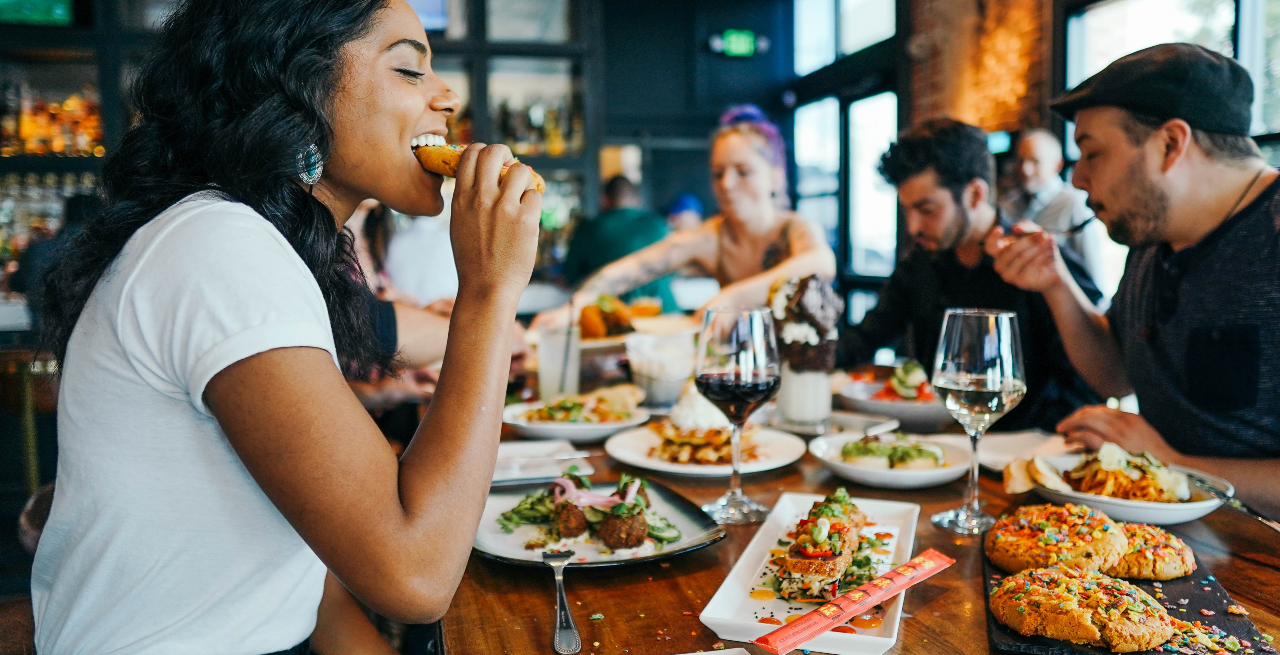Don’t Let Your Loyalty Program Go Stale – Putting CX Center Table
5 Min Read By Britt Mills
Here’s how loyalty programs often pan out: A customer downloads the app. They might create an account, log in, place an order, and apply a discount — or they might not even get that far. And when they close their phone or exit the order line, they never touch the app again.
Does that sound familiar? If your answer is, “Yes, chef,” then you aren’t alone. Although the average consumer belongs to 15 or so loyalty programs, they use fewer than seven. Within a year, more than half of loyalty memberships go completely inactive — leaving your promo codes, deals, and discounts to rot away in the spam folder of history.
In today’s digital world, restaurant and food brands need to focus on digital engagement that freshens up the overall customer experience (CX), making the process more convenient, informative, and integrated from start to finish. So how can you make your loyalty program stand out instead of going stale?
Digital Touchpoints that Feed Customer Appetite
More than 90 percent of companies offer loyalty programs, but not all brands see the same success with their members. In fact, eight in 10 consumers report they withdraw their loyalty from brands faster than they did three years ago.
Thanks to expectations set by Amazon, Apple, and other customer-optimized brands, today’s consumers demand more from companies across all industries. Features like a seamless checkout process, free shipping and delivery, early access, and easy-to-use rewards have become table stakes.
Successful loyalty programs focus on understanding customers and elevating their experience.
At the same time, smart restaurant and food brands understand that loyalty programs aren’t just a way to get diners in the door. They’re vehicles for building brand preference by heightening emotional connections with customers and fostering satisfaction with a purchase. Adding more discounts or upping reward points isn’t enough to achieve this deeper level of engagement. It’s not a sustainable strategy long-term, either — you’d eventually have to make your whole menu free to keep customers coming back.
Instead, successful loyalty programs focus on understanding customers and elevating their experience — and that means integrating loyalty benefits into digital touchpoints to guide a better, more satisfying experience that lines up with customers’ evolving expectations.
What does that type of seamless digital engagement look like in practice? A loyalty app could remind a customer that they have a reward for a menu item and allow them to redeem the reward with one tap. Or customers might receive a personalized notification from a restaurant manager saying “thank you for your order” and that morning coffee is on them.
Loyalty programs that build personalized connections with customers create emotional responses that are stronger than a simple price cut. That’s a recipe for better engagement and relationships with customers that last longer than a single interaction. And the result makes a tangible impact on the bottom line: Companies leading in loyalty grow revenues 2.5 times as fast as other companies.
Cooking Up a Better CX
Brands that recognize the value of loyal customers want them to get the most value from their loyalty program — and they make it as easy as possible to do so. As you look to reinvigorate your loyalty program, consider these three steps to build better experiences for your top customers.
1. Seamless experiences are the standard
You may have had the unfortunate experience of standing at the counter or in line at the drive-thru, scrolling through your phone trying to find a reward, while the cashier stands silently and other customers grow increasingly impatient. Dealing with a poorly designed app is a stressful experience — and it’s one reason why many loyalty program members end up paying for their meals and leaving without using their benefits.
The best loyalty programs take away redemption anxiety by offering a more streamlined experience.
The best loyalty programs take away redemption anxiety by offering a more streamlined experience. Take Chick-fil-A, for example. When a customer orders ahead, Chick-fil-A’s online checkout system will identify the order, assess applicable rewards, and allow the customer to apply rewards with one tap. This system works because it guides customers through the redemption process instead of placing the burden on them to locate and access rewards on their own.
Integrating loyalty benefits into your checkout system is a great first step toward seamlessness, but you shouldn’t stop there. Take a long, hard look at your customer journey and ask yourself how you can make every step from browsing and ordering to rewards redemption and checkout quicker and easier.
2. Innovate with the customer in mind
If you're a regular at Panera Bread or Chipotle, your go-to order is already waiting when you log into their apps. If you’re a loyalty member, you’ll also get suggestions for additional items that qualify for a reward. Brands that set CX trends don’t just ask what customers want in a loyalty program, they find their own ways to reduce friction throughout the process, solve common frustrations for customers, and reward their most loyal diners for their patronage.
You can differentiate your loyalty program and its benefits from competitors by mapping out your customer journey and reducing points of friction that customers might not even know existed — whether creating more predictive experiences or giving preferential treatment to your most loyal patrons.
For example, you might move loyalty members’ orders to the front of the queue or guarantee their order will be ready within 30 minutes. They might get bumped to the front when they make a reservation or have priority parking when they pick up their meal. Invest in solutions that meet needs customers haven’t yet thought of — and show how loyal customers get value from your loyalty program at every step of the process.
3. CX is an organization-wide initiative
Businesses often delegate every aspect of loyalty programs to the marketing department. But successful CX optimizes all touchpoints your customers have across your company. When the marketing department is entirely responsible for building loyalty experiences, you risk creating an empty promise that can’t be delivered. Your store operations team won’t be on board with the latest discounts and deals once customers are inside. Your data team won’t have the right information to customize and personalize experiences online. Your engineering team may not be able to implement that app update in time for the next promotion.
CX is a full-course meal — and loyalty programs should be the cherry on top that keeps customers coming back for more.
It takes the entire organization to carry out any CX function — and loyalty programs are no different. Start by mapping out every aspect of your loyalty program and every department necessary to carry those efforts out. Providing a high-level view of your loyalty program ensures that teams across your organization are on the same page and working together to accomplish a common goal: Better experiences for your customers.
CX is a full-course meal — and loyalty programs should be the cherry on top that keeps customers coming back for more.
For food and restaurant brands, just having a loyalty program is no longer enough on its own (really, it never was). With so many options on the table, brands that stick with old-school methods — forcing customers to remember, select and redeem a reward on their own — are missing opportunities at best, or losing customers at worst.
Rather than offering yet another untargeted discount, turn your attention to how customers will access, interact, and redeem that offer. More importantly, focus on how those processes build strong relationships with loyal customers, create an emotional response to your brand, and improve the overall dining experience. CX is a full-course meal — and loyalty programs should be the cherry on top that keeps customers coming back for more.


